I love working with hand dyed yarns. The colors are unlike anything I can find elsewhere, and I love being able to support smaller dyers.
But one of the challenges of using hand dyed yarns is that they can have unwanted color pooling effects. To avoid that, I like to alternate skeins every couple rows.
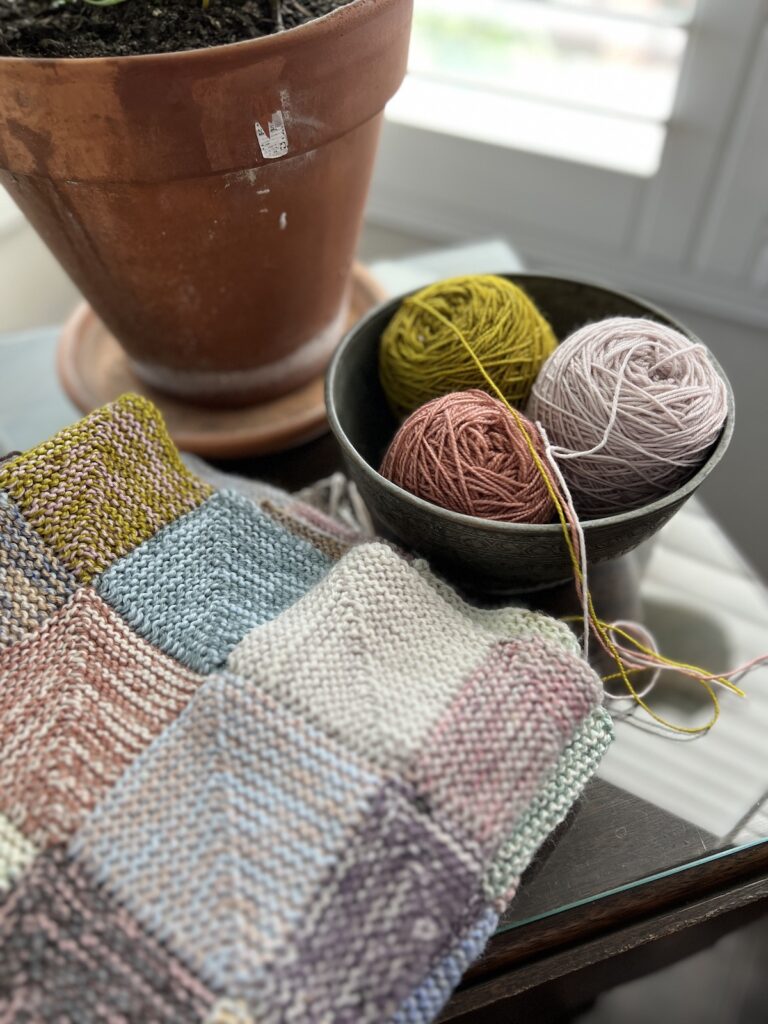
Of course, that then creates another problem: the yarn tends to get tangled up.
So how to avoid tangling yarn and why does it matter at all? Let’s talk about it.
Why Tangled Yarn is a Problem
First, let’s talk a little bit more about why this is a problem to begin with. You see, hand dyed yarns are often dyed with the yarn tied in loops, kind of like a lasso before it’s thrown. Color is then poured or sprinkled on top. This means color shows up at the same interval on the strand of yarn.
When you are knitting with that yarn, that same patch of color is likely to come up at the same point in your work. This can cause color pooling, where splotches of color concentrate in one spot. Depending on what you’re knitting, that may not be something you want.
To avoid color pooling, you can use two balls of yarn and alternate every couple rows, like I did with my Auklet Shawl. That means you knit two rows with Ball A, then two rows in Ball B, then back to Ball A for two rows, then back to Ball B for two rows. You carry on like that until the end of the project.
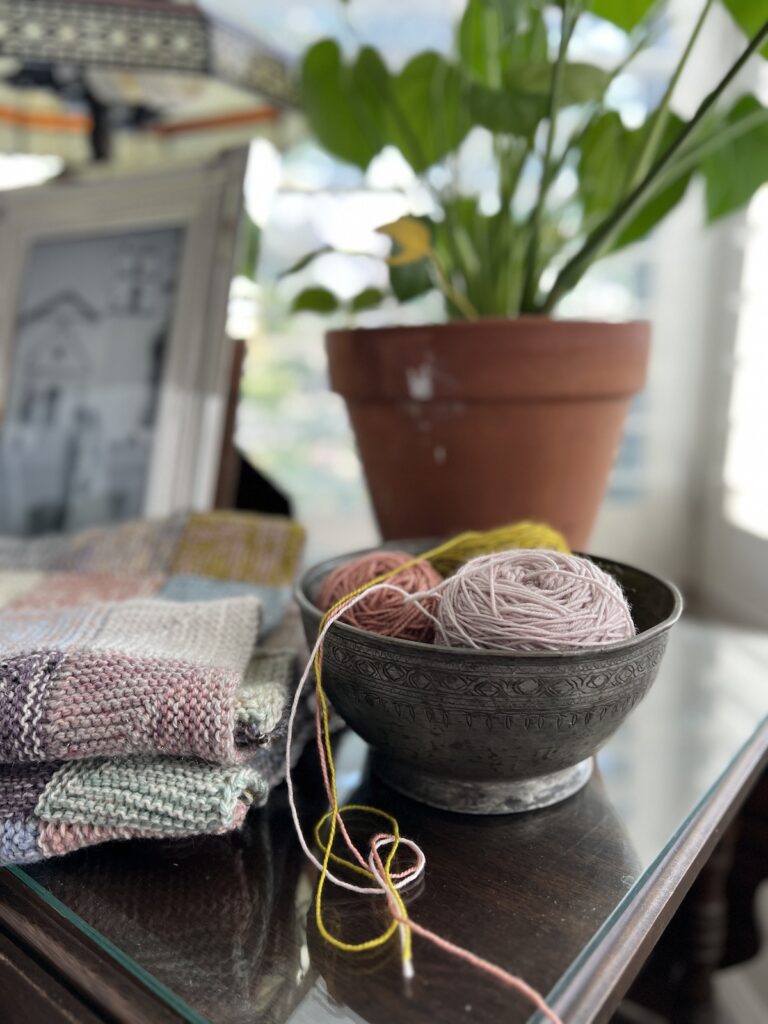
In this way, you break up the flow of color so that you don’t get stripes or blotches where you don’t want them. The rows are also at brief enough intervals that you don’t have to snip the yarn and weave in a bunch of ends.
This can produce a challenging side effect, though. As you carry the yarn up your work, you’re constantly twisting the two strands of yarn around each other. Eventually, they will get so tangled that you won’t be able to pull the strands of yarn individually anymore.
That also means that there could be some felting between the yarns. Felting is especially common if you are working with some mohair or a particularly loosely spun yarn.
To account for the tangling and the felting, you need to use a trick or two. Here are some of my favorites.
Trick #1: Avoid Tangling Yarn by Using Containers
I like to put my two different balls of yarn into different containers. You can use yarn bowls if you want, but I’m also fine with a couple colanders or food storage containers with the yarn fed through the steam vent. You can (and should!) use whatever works for you.
The two containers will prevent the balls from rolling all over and tangling more than necessary. When you reach a point where your yarn is starting to get too twisted, you can pause and use the containers as an anchor while you untangle the yarns.
Trick #2: If the Yarn Keeps Tangling, Don’t Fight It
Let them tangle. No, I’m serious. Sometimes, the easiest way to deal with tangling is just to let it happen and then periodically untwist your work using the force of gravity.
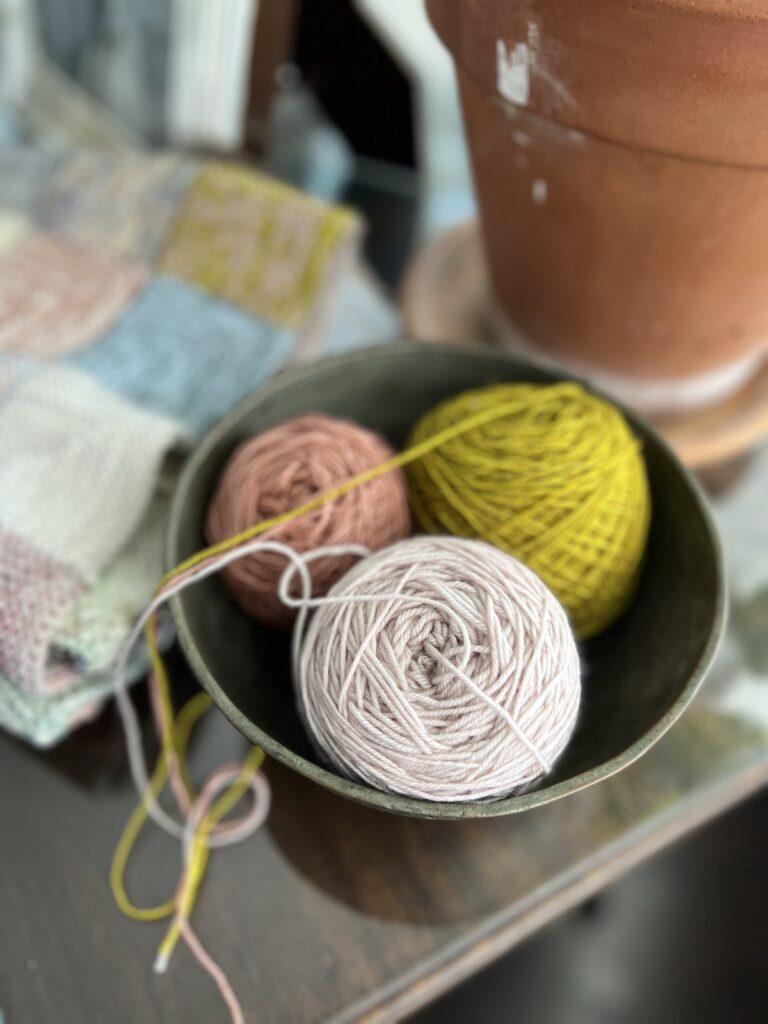
Here’s what I mean. When you find that your yarn is too tangled up and you can’t feed one strand separately from the other anymore, stop knitting. Grab each strands of yarn at the ball and start winding yarn around each ball. Eventually, you’ll get to the point where the two strands of yarn meet. Holding the balls up in the air, gently pull them apart. This will cause the dangling yarn and knitting in front of you to start untwisting using gravity.
This method only really works if you are working on smaller projects. I use it a lot for socks, but it’s not so great for sweaters. That’s because sweaters are so heavy that they don’t dangle and untwist as easily.
Trick #3: Keep the Yarns on Separate Sides of Your Body
I am a continental knitter, so I tend to keep the yarn on the left side of my body. I let it feed into my left hand and then up onto the needles. That’s fine if I’m using just one ball of yarn, but if I have two balls of yarn, keeping a second ball of yarn on the right side of my body can help keep them from tangling a bit.
You’ll still have to untangle the yarn periodically as it twists around itself when you’re working, but you’re not going to have the balls tumbling and rolling over each other and getting more tangled while you work.
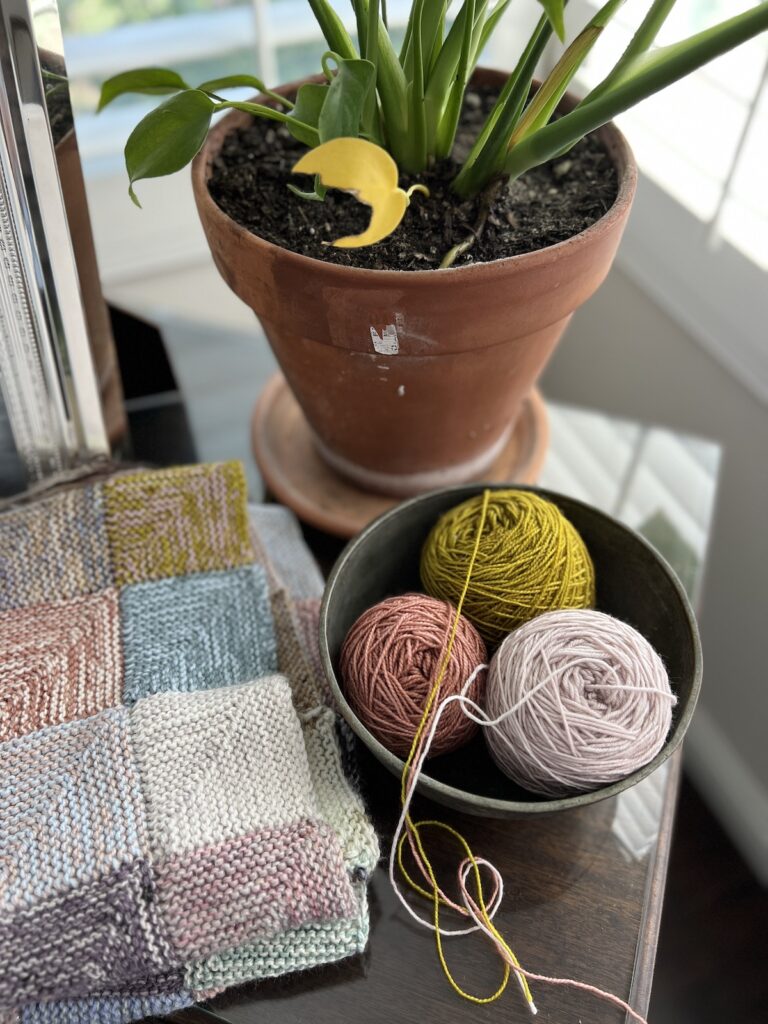
Whichever of these methods you choose, the trick to keeping your yarn from getting tangled up is pretty straightforward and low tech. Unfortunately, that also means there’s only so much we can do to avoid the problem.
The best way to prevent your yarn from getting tangled up while working with it is to only use one strand at a time. Failing that, these should help minimize the frustration.
Do you have any other tricks you use when working with two or more strands of yarn? I’d love to hear from you in the comments!
Let’s stay connected!
Join my newsletter for 30% off all new releases, regular updates with helpful tips and tricks, first crack at registration for upcoming workshops, exclusive discounts, and more.
Join the A Bee In The Bonnet Facebook Group to participate in knitalongs and other fun community events
Come hang out with me on the A Bee In The Bonnet TikTok
Follow along on the A Bee In The Bonnet Instagram
Get inspired via the A Bee In The Bonnet Pinterest

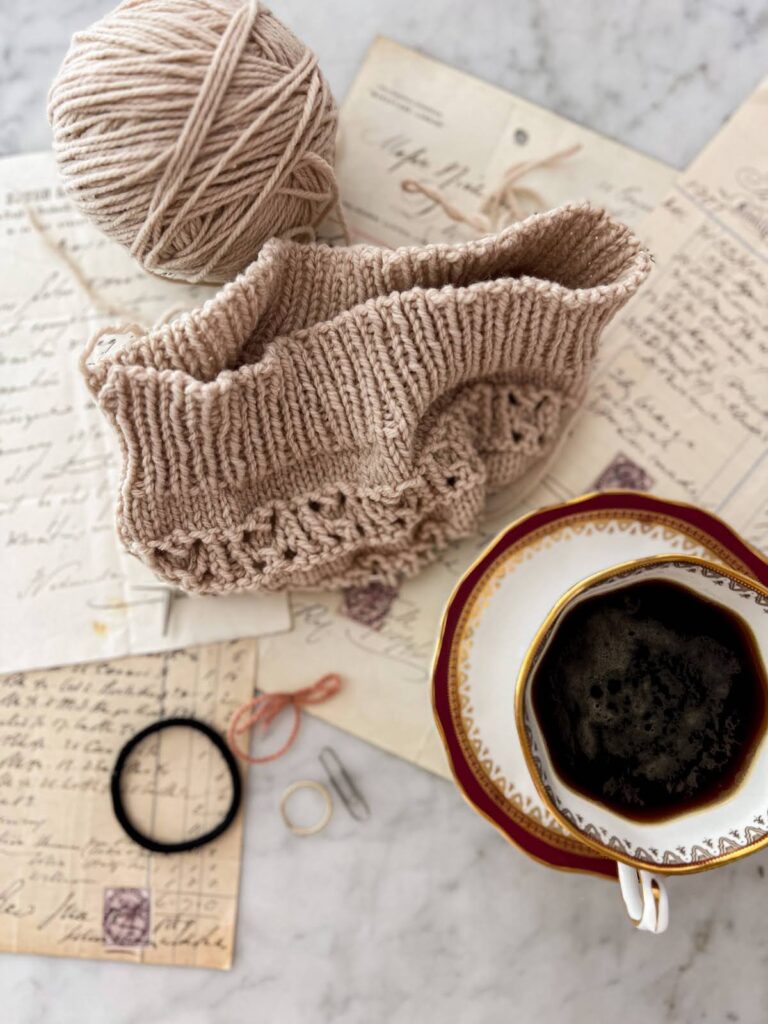
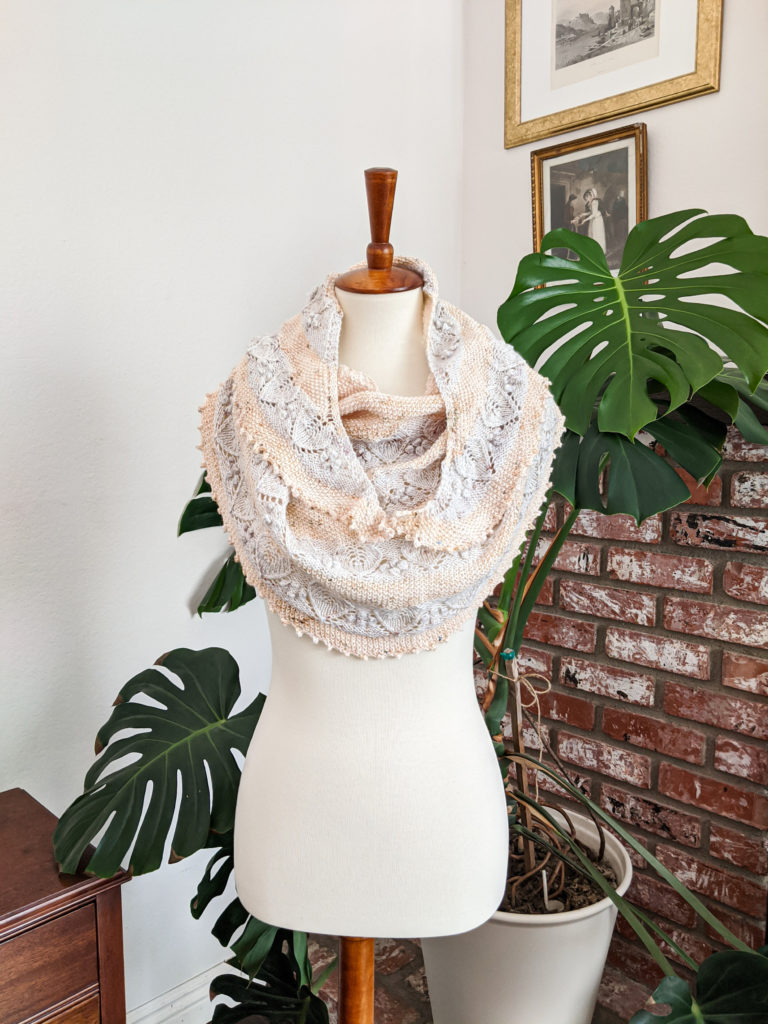
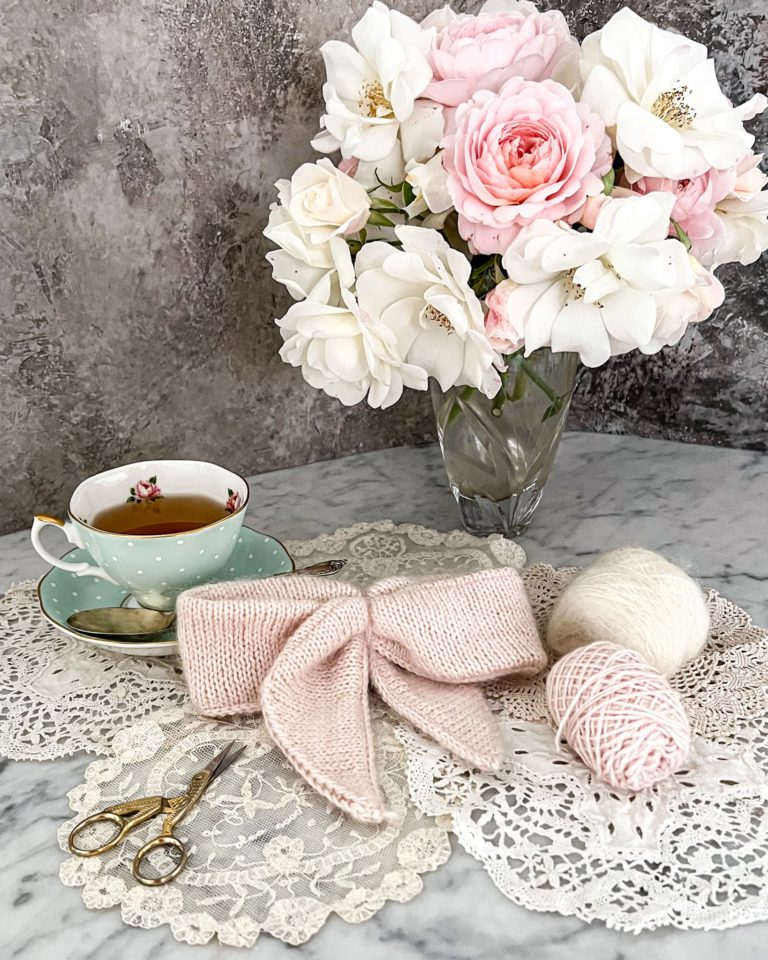
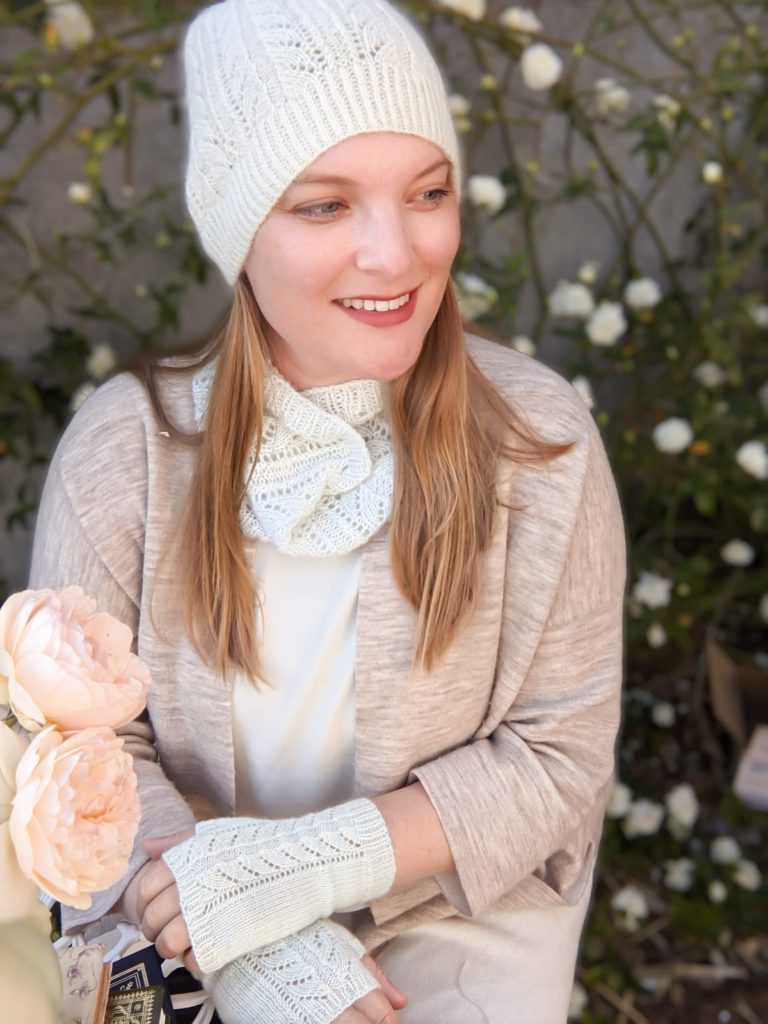
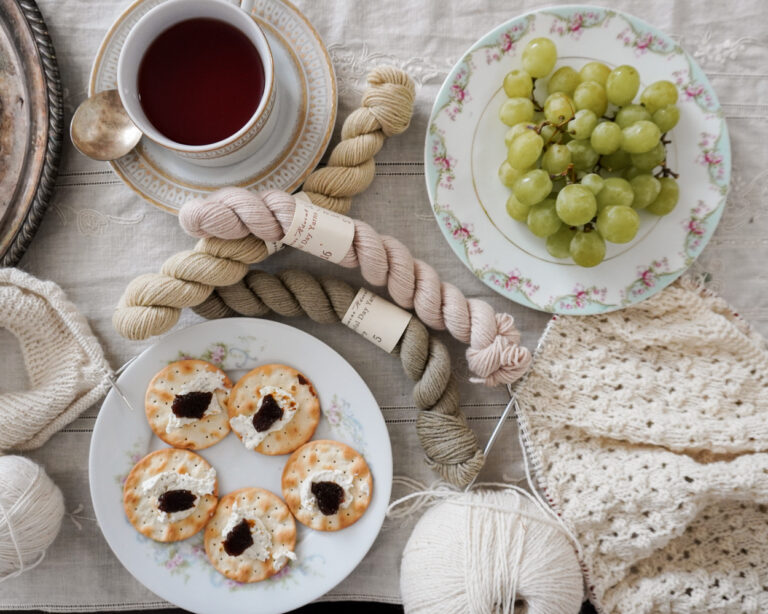
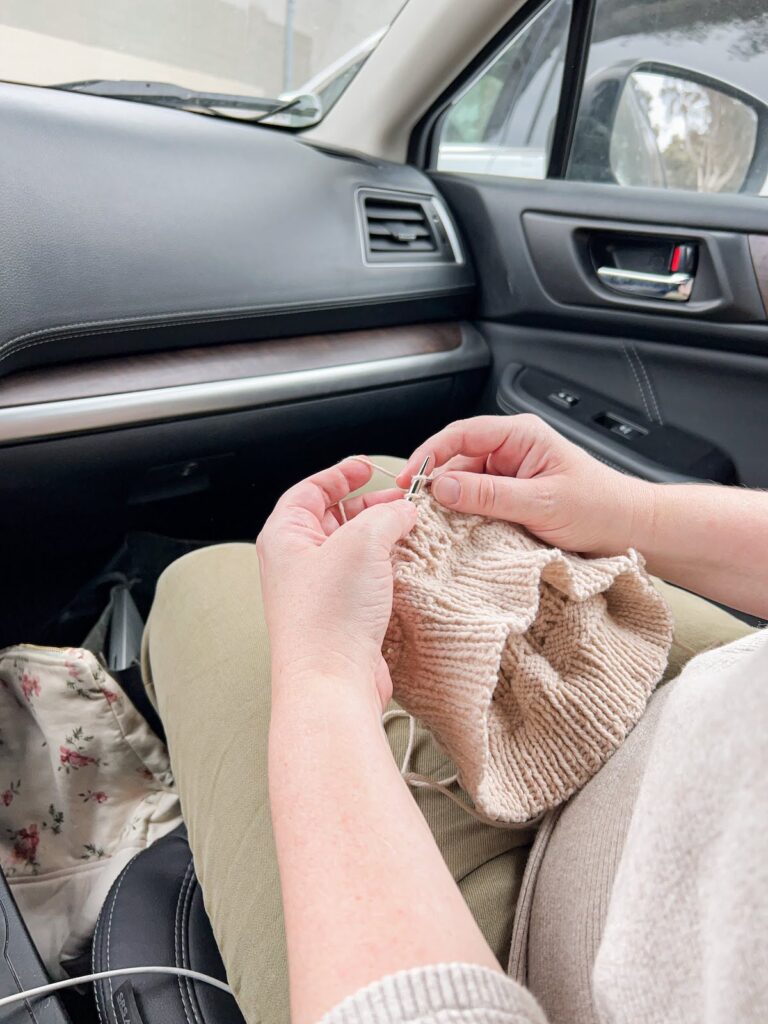
Knee-high nylon stockings work surprisingly well for yarn containers. They have the added advantage of preventing those pesky tangles when you’re using the center pull and you get down to the very end of the skein.
Oh, that’s a fascinating idea. I’ll have to give that a try one of these days.